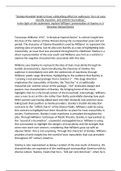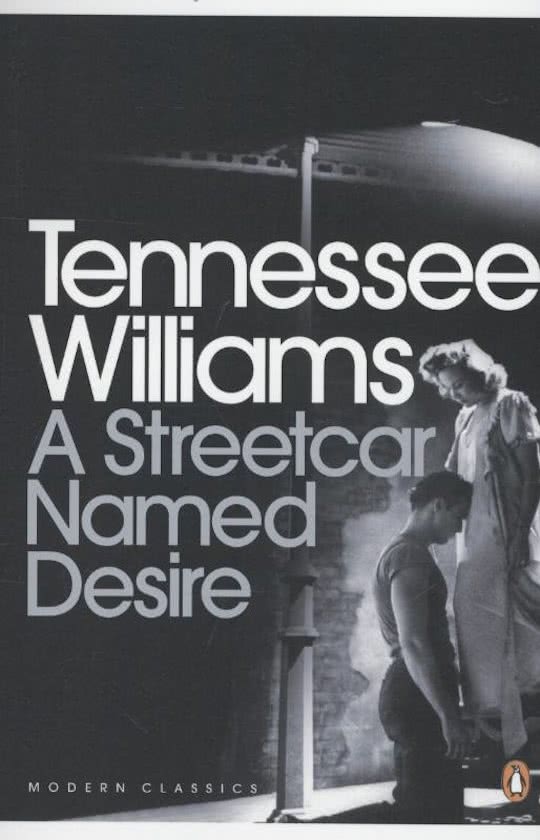“Stanley Kowalski tends to have a disturbing effect on audiences: he is at once
morally repulsive, and entirely fascinating”.
In the light of this statement, explore Williams’ presentation of Stanley in A
Streetcar Named Desire
Tennessee Williams’ 1947, “A Streetcar Named Desire” is a direct insight into
the lives of the natives of New Orleans during the cosmopolitan post-civil war
period. The character of Stanley Kowalski is used by Williams’ to represent the
working class of society, but he also uses Stanley as a way of highlighting toxic
masculinity, an issue that was prevalent throughout his childhood. Stanley is a
direct representation of the new south and Williams uses him as a vehicle to
explore the negative characteristics associated with this idea.
Williams uses Stanley to represent the idea of toxic masculinity through his
brutish characteristics. Upon introducing the character of Stanley, the
audience is immediately met with the sentiments of machismo through
Williams’ poetic stage directions, highlighting to the audience that Stanley is,
“carrying a red-stained package from a butcher’s”. This stage direction
emphasises the masculinity of Stanley, the “butcher” is a traditionally
masculine job and the colour of the package, “red” insinuates danger and
passion, two characteristics of Stanley. His bringing home of the meat,
highlights that he is the bread-winner of the household. Interestingly, Williams
uses a man to act as this role rather than Stella, potentially showing how post-
WW1 women were being ebbed back into their domestic role and men were
taking back their position as family-providers. Stanley’s brutish introduction
contrasts to the “raffish charm” of the Elysian Fields. Williams could be using
this contrast to highlight how there should be no place for toxic masculinity in
society. Furthermore, Stanley’s toxic machismo is prevalent throughout the
play. Through Williams’ technique of Plastic Theatre, Stanley is represented as
the “sound of a locomotive”, a powerful unstoppable force. Williams is using
this connotation to highlight the dangers of masculinity and the strength that
some men exert over women, considering that Williams grew up with an
abusive father, this is not surprising. Through the character of Stanley, Williams
provides a harsh insight into the world of toxic masculinity that was prevalent
throughout 20th century America.
Stanley is also represented as being a symbol of the new south of America. His
characteristics are expressive of the melting pot cosmopolitan America with its
diverse culture. Stanley, insists that he is, “100 per cent American”, when he is





